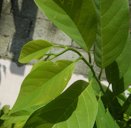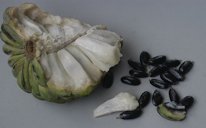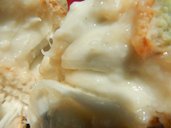| Sugar Apple, Sweetsop - Annona squamosa | ||||||||||||||||||||||||||||||||
|---|---|---|---|---|---|---|---|---|---|---|---|---|---|---|---|---|---|---|---|---|---|---|---|---|---|---|---|---|---|---|---|---|
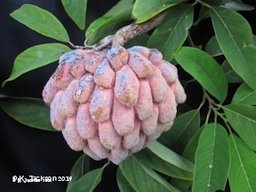 Fig. 1 Annona squamosa, sugar apple, red variety
 Green variety 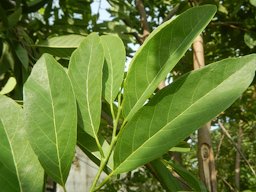 Fig. 3  Atis (fruit) Bayabas Guava (Philippines) 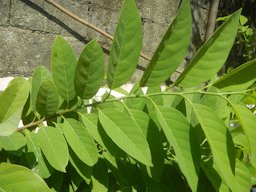 Fig. 4  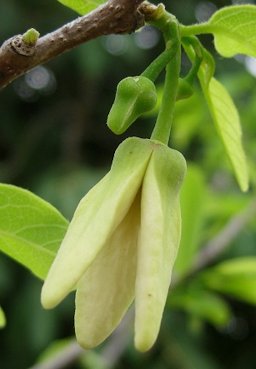 Fig. 8 Flowering annona, female stage  Fig. 9  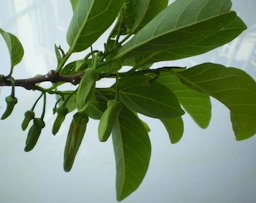 Fig. 10  Nụ hoa cây Na, sugar apple flower buds, Vietnam 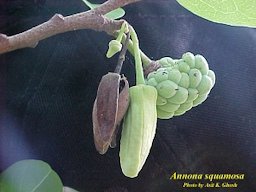 Fig. 11  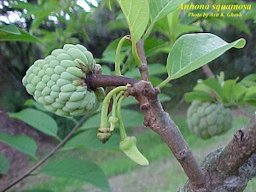 Fig. 12  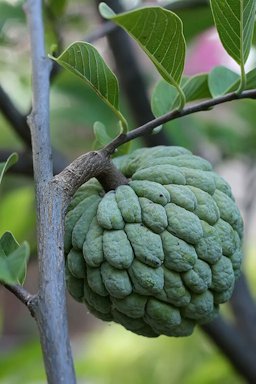 Fig. 13  Sugar apple green variety 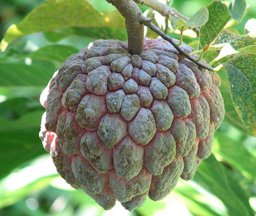 Fig. 14  Sugar apple red variety 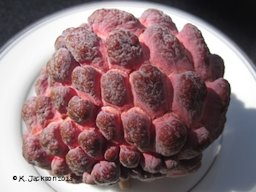 Fig. 15  When the fruit reaches full size, the bumps become separated by a creamy-yellow color between them. 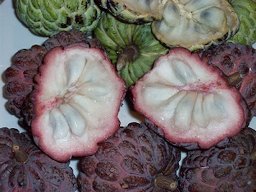 Fig. 16  Red and green varieties 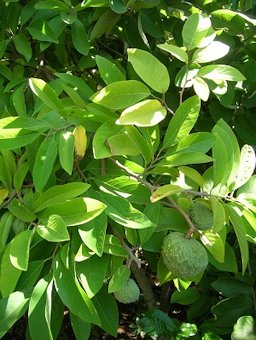 Fig. 21 Leaves and fruit habit 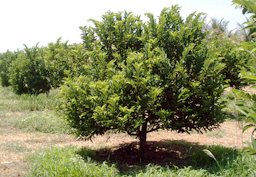 Fig. 22  Sugar-apple plantation, Bahia, Brazil  Fig. 23 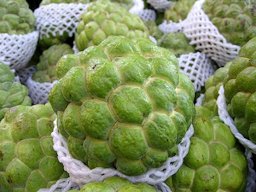 Fig. 24  Fig. 25 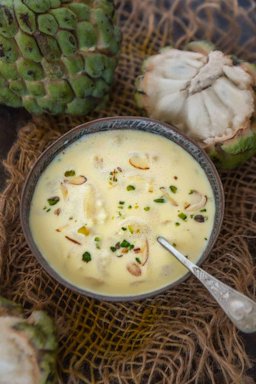 Fig. 26  Custard apple basundi 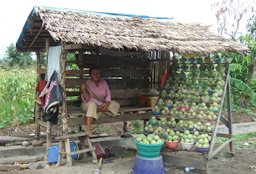 Fig. 27  A. squamosa in Bulukumba, South Sulawesi, Indonesia Fig. 28  Sugar-apples (A. squamosa), Taitung County, Taiwan 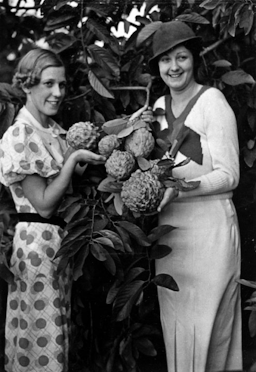 Fig. 29  Custard apples, Redland Bay, Queensland |
Scientific
name Annona squamosa L. Pronunciation ahn-NOE-nah skwa-MO-suh Common names English: custard-apple, sugar-apple, sweetsop; Chinese: fan li zhi; Dutch: kaneelappel; French: annone écailleuse, cachiman cannelle, pomme canelle; German: Rahmapfel, Schuppenannone, Süßsack, Zimtapfel, Zuckerapfel; Italian: mela canella, pomo canella; Portuguese: ata; Portuguese (Brazil): fruta-do-conde, pinha; Spanish: anón, anona blanca, chirimoyo, fruta de condesa, fruta del conde; Spanish (Mexico): saramuyo; Swedish: sockerannona 10 Synonyms A. asiatica L.; A. biflora Moç. & Sessé; A. cinerea Dunal; A. forskahlii DC.; Guanabanus squamosus M.Gómez; Xylopia frutescens Sieb. Ex Presl; Xylopia glabra L. 8 Relatives Cherimoya (A. cherimola), soursop (A. muricata), custard apple (A. reticulata), pond apple (A. glabra), ilama (A. diversifolia), atemoya (A. cherimola x A. squamosa) Family Annonacaea (annona family) Origin Indigenous to tropical America USDA hardiness zones 10-13 Uses Best as fresh fruit; excellent Height 15-20 ft (4.5-6.1 m) Spread 15-20 ft (4.5-6.1 m) Crown Broad open crown Plant habit Much branched shrub or small tree; multiple stems; with long, slender branches Growth rate Moderate Trunk/bark/branches Bark light brown; even texture; irregular branches, zigzag twigs Leaves Semi-deciduous: alternate, 6-8 in. (15-20 cm) long; thin; soft; aromatic when crushed Flowers Greenish-yellow; borne singularly, or in clusters; 1 in. (2.5 cm) long; late spring Fruit Heart-shaped; 3-4 in. (7.6-10 cm) in diameter; skin bumpy and green with juicy, sweet, white flesh, neatly encasing several shiny black seeds; the fruit is classed as excellent 4 Season August through winter USDA Nutrient Content pdf Light requirement Sun or partial shade Soil tolerances Well-adapted to most well-drained soil types, including the sands and limestone based soils of south Florida pH preference 5.5-6.5 (alkaline) Drought tolerance Tolerant Flood tolerance Not tolerant of excessively wet or flooded conditions Soil salt tolerance Not tolerant of saline soil and water conditions Cold tolerance 27° F (-2.8° C); cannot withstand frost or long cold periods Plant spacing 15-20 ft (4.5-6 m) Roots Shallow and weak root system Invasive potential * None reported Pest/Disease resistance Susceptible to the seed borer, Bephratelloides cubensis Known hazard Seeds contain toxic, insecticidal substances Reading Material Sugar Apple Growing in the Florida Landscape, University of Florida pdf Sugar Apple, Fruits of Warm Climates The Delightful Sugar Apple, Archives of the Rare Fruit Council of Australia The Sugar Apple, Manual of Tropical and Subtropical Fruits Annona Squamosa: The Sugar Apple, University of Florida, Palm Beach County Origin The original home of the sugar apple is unknown. It is commonly cultivated in tropical South America, not often in Central America, very frequently in southern Mexico, the West Indies, Bahamas and Bermuda, and occasionally in southern Florida. 6
Description Annona squamosa is a small, semi-(or late) deciduous, much branched shrub or small tree 3 metres (9.8 ft) to 8 metres (26 ft) tall very similar to soursop (Annona muricata) with a broad, open crown or irregularly spreading branches and a short trunk short, not buttressed at base. The fruit of A. squamosa (sugar-apple) has delicious whitish pulp, and is popular in tropical markets. 2
Leaves Leaves are dull, pale green, and hairy when young but smooth at maturity, thin, lanceolate to oblong lanceolate, and 2.5 to 4 inches long (6.4-10.2 cm). Trees are deciduous; however, the rate of leaf drop depends upon the severity of cool winter temperatures and leaf disease pressure, which is aggravated by late summer–fall rainfall. 1
Fig. 5. Atis (Philippines) leaves Anonaceae, A. squamosa sugar apple Fig. 6,7. A. squamosa, Annonaceae, Thane, India Flowers Flowers emerge during mid- to late spring as trees flush in new vegetative growth. Flowers are small, about 1 inch long (2.54 cm), produced singly or in clusters of 2 to 4 from the leaf axils on year-old shoots or new growth. The flowers are composed of 3 green, fleshy petals, 3 small, inconspicuous sepals, and numerous pistils on a common receptacle. 1 Pollination "The sugar apple and its' relatives are not self-pollinating. The flower is naturally pollinated by the nitidulid beetles if they are around. The activities of beetles in the flowers, including feeding, mating, and quiescence, result in prolonged visits from several hours to a few days while the flowers advance from the female to the male phase. Attracting the beetles can be done by leaving rotting fruit under the tree. When the flowers open, the beetle will be attracted by the odor." (Mr. Har Mahdeem) "Mr. Mahdeem suggested we take the time to learn at what time of day the flowers open so they can be hand pollinated to assure better fruiting. He reminds us that the female flower probably has a hundred of carpels that need to be pollinated. If they are not completely dusted with pollen you will likely have deformed fruit." Sugar apple trees produce flowers on 1- to 2-year-old wood and newly emerging shoots. 1 Flowering Behavior, Pollination, and Fruit Set, University of Florida Key Issues: Pollination, The State of Queensland (through the Department of Agriculture and Fisheries) Hand Pollination of Custard Apples, Archives of the Rare Fruit Council of Australia
Fruit The aggregate fruit is heart-shaped, round, ovate, or conical, from 2 to 5 inches (5.1-12.7 cm) in diameter and weighs from 4 to 24 oz (113-682 g). The fruit is composed of loosely cohering segments, which project as rounded protuberances and are easily separated when the fruit is ripe. The pulp of green and purplish-red sugar apples is white or creamy white, with a custard-like consistency and sweet, pleasant flavor. There are numerous, small, shiny, dark brown seeds embedded in the pulp. Misshapen fruit is caused by incomplete pollination. 1 It is unique among Annona fruits in being segmented, and the segments tend to separate when ripe, exposing the interior. 3 Fruit is produced on shoots which grew the previous season, as well as those which grew two years earlier. 4
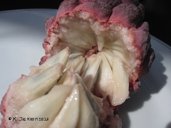 Fig. 20  Fig. 17. The black seeds, white pulpy seed-containing segment, and a section of sugar apple fruit (green variety) Fig. 20. Close-up of the sugar apple core Varieties Most sugar apple trees are grown from seed and within a particular selection (e.g., 'Thai Lessard', 'Kampong Mauve') there appears to be little variability among seedlings. Several selections have been introduced including 'Thai Lessard' (a green type), 'Purple' or 'Red', 'Kampong Mauve' (purplish-red types), and a seedless type known under various names, 'Cuban Seedless' and 'Brazilian Seedless'. 1 The name 'Kampong Mauve' comes from David Fairchild's home the Kampong. This is one of the cultivars he introduced. 12 "Mr. Har Mahdeem, popular horticultural circuit speaker and authority on Annonaceae, described the fruit of the red varieties (Kampong Mauve) as being juicy, very sweet with a thin skin. The skin of the M1 is scaly and thick and the flesh is starchy. He does not recommend the seedless varieties as the more seeds the sugar apple has, the better the flavor. He told us you could get a tree, grown from seed, to bear fruit in two or three years." Varieties Page Harvesting When the fruit reaches full size, the green bumps become separated by a creamy-yellow colour between them. The fruit is ready for harvest when it reaches this stage and when it feels slightly spongy in comparison to previously being rock hard. 5 In Florida it is common to pick ripe fruits during as many as six months out of the year. When the fruits are fully ripe, they burst open on the tree. They should be picked before reaching this stage and placed in the house, where they will soften in one to three days. Propagation Sugar apple seeds have a relatively long life, having kept well for 3 to 4 years. They germinate better a week after removal from the fruit than when perfectly fresh. Germination may take 30 days or more but can be hastened by soaking for 3 days or by scarifying. Side-grafting can be done only from December to May, requires much skill and the rate of success has not exceeded 58.33%. Shield-budding gives 75% success and is the only commercially feasible method. Seedlings may be budded or grafted when one-year old. Inarching is 100% successful. Cuttings, layers, air layers have a low rate of success, and trees grown by these techniques have shallow root systems and cannot endure drought as well as seedlings do. 6 Grafting Annonas in Southern Florida, Hort Science pdf Planting Many areas in Florida have sandy soil. Remove a 3- to 10-ft-diameter (0.9- to 3.1-m) ring of grass sod. Dig a hole 3 to 4 times the diameter and 3 times as deep as the container the sugar apple tree came in. Making a large hole loosens the soil next to the new tree making it easy for the roots to expand into the adjacent soil. It is not necessary to apply fertilizer, topsoil, or compost to the hole. In fact, placing topsoil or compost in the hole first and then planting on top of it is not desirable. If you wish to add topsoil or compost to the native soil, mix it with the excavated soil in no more than a 50-50 ratio. 1 Backfill the hole with some of the excavated soil. Remove the tree from the container and place it in the hole so that the top of the soil media from the container is level with or slightly above the surrounding soil level. Fill soil in around the tree roots and tamp slightly to remove air pockets. Immediately water the soil around the tree and tree roots. Staking the tree with a wooden or bamboo stake is optional. However, do not use wire or nylon rope to tie the tree to the stake because they may eventually damage the tree trunk as it grows. Use a cotton or natural fiber string that will degrade slowly. 1 Compost may be used sparingly (in small amounts, 1-3 shovels full) as an addition to the native soil when planting landscape trees and added to the topsoil under the tree canopy. 1 Pruning Sugar Apple Trees, University of Florida Fertilizing During the first 2 to 3 years after planting, growing a strong, vigorous tree is the goal. It is recommended that any fruit that sets during the first year or so be removed so that the tree will grow vigorously. After the third year, the emphasis changes to cultural practices that enhance flowering, fruit set, and fruit development. These include reduced frequency of N-P2O5-K2O applications and close attention to irrigation from flowering to harvest during prolonged dry periods. 1 Suitable fertilizer formulations for sugar apple include 2-8-8, 4-8-8, 6-6-6-3, or 8-3-9-5, or similar materials. Frequent applications at low rates will provide a more constant nutrient supply and reduce the potential for leaching of nutrients beyond the roots due to heavy rainfall. 1
Irrigation Sugar apple trees are tolerant of drought conditions, however, fruit set and fruit size may be reduced and defoliation may occur due to drought stress. Mild to severe drought stress may reduce atemoya (a relative of sugar apple) fruit size by 10 to 50%. Therefore, periodic watering of sugar apple trees is recommended from flowering through fruit development to enhance fruit quality and production. 1 Diseases
Pests Page Food Uses Sugar apple is a prized dessert fruit of the tropics. The pulp of the mature fruits is eaten fresh. Strained fruit pulp (to remove the seeds) provides nectar useful in ice cream and sherbet preparations. The juice also may be combined with milk as a flavorful beverage. 7 It is never cooked. Medicinal Properties ** In India the crushed leaves are sniffed to overcome hysteria and fainting spells; they are also applied on ulcers and wounds and a leaf decoction is taken in cases of dysentery. Throughout tropical America, a decoction of the leaves alone or with those of other plants is imbibed either as an emmenagogue, febrifuge, tonic, cold remedy, digestive, or to clarify the urine. The leaf decoction is also employed in baths to alleviate rheumatic pain. The green fruit, very astringent, is employed against diarrhea in El Salvador. In India, the crushed ripe fruit, mixed with salt, is applied on tumors. The bark and roots are both highly astringent. The bark decoction is given as a tonic and to halt diarrhea. The root, because of its strong purgative action, is administered as a drastic treatment for dysentery and other ailments. 7 Other Uses The seeds are toxic and should NOT be eaten. Powdered seeds reportedly are used in India as a fish poison and as an ingredient in a paste to control human head lice. 7 Toxicity The seeds are acrid and poisonous. Bark, leaves and seeds contain the alkaloid, anonaine. Six other aporphine alkaloids have been isolated from the leaves and stems: corydine, roemerine, norcorydine, norisocarydine, isocorydine and glaucine. Aporphine, norlaureline and dienone may be present also. 7 General
Other Edibles in the Annona Genus: Atemoya (A. cherimola x A. squamosa) Biriba (Rollinia mucosa, A. mucosa) Cherimoya (A. cherimola) Custard Apple (A. reticulata) Ilama (A. macroprophyllata) Mountain Soursop (A. montana) Pond Apple (A. glabra) Poshte (A. scleroderma) Soursop (A. muricata) Further Reading The Sugar Apple, Archives of the Rare Fruit Council of Australia Custard Apples (Annona spp.), Neglected Crops Sugar Apple Botanical Art List of Growers and Vendors |
|||||||||||||||||||||||||||||||
| Bibliography 1 Crane, Jonathan H., et al. "Sugar Apple Growing in the Florida Home Landscape." Horticultural Sciences Dept,, UF/IFAS Extension, HS38, Original pub. Oct. 1979, Revised Apr. 1994, Oct. 2005, and Nov. 2016, Reviewed Dec. 2019, AskIFAS, edis.ifas.ufl.edu/mg330. Accessed 2 May 2018, 28 Oct. 2020. 2 "Annona squamosa." Wikipedia, wikipedia.org. Accessed 27 Aug.2014. 3 "Sugar Apple." Wikipedia, wikipedia.org. Accessed 27 Aug.2014. 4 Gray, Ted. "The Delightful Sugar Apple." Archives of the Rare Fruit Council of Australia, Mar. 1981, rfcarchives.org.au. Accessed 9 Apr. 2015. 5 King, Allan. "The Sugar Apple." Archives of the Rare Fruit Council of Australia, Nov. 1982, rfcarchives.org.au. Accessed 9 Apr. 2015. 6 Fruits of Warm Climates. Julia F. Morton, Miami, 1987. 7 "Sugar Apple/Sweetsop, Annona squamosa, Annonaceae." ECHO Plant Information Sheet, ECHO 17391 Durrance Rd, N. Fort Myers FL 33917 USA, ECHO, ECHOcommunity.org. Accessed 21 Nov. 2015. 8 "Annona squamosa." Useful Tropical Plants Database, tropical.theferns.info. Accessed 16 Jan. 2016. 9 "Artificial pollination of sugar apple and atemoya." Food and Fertilizer Technology Center for the Asian and Pacific Region, Taitung District Agricultural Improvement Station, Taiwan ROC, agnet.org. Accessed 23 June 2016. 10 "Taxon: Annona squamosa L." USDA, Agricultural Research Service, U.S. National Plant Germplasm System, GRIN-Global, npgsweb.ars-grin.gov/gringlobal/taxonomydetail.aspx?id=3503. Accessed 16 July 2021. 11 Popenoe, Wilson. Manual Of Tropical And Subtropical Fruits. 1920, London, Hafner Press, 1974. 12 Bronson, Eric. "Annona squamosa 'Kampong Mauve'." I likE plants! 18 Aug. 2008, (CC BY-NC-ND 3.0 US), ilikerareplants.blogspot.com/2008/08/annona-squamosa-kampong-mauve.html. Accessed 16 July 2021. Videos v1 "All About Sugar Apples." Truly Tropical, 28 Aug. 2017, (CC0), www.youtube.com/watch?v=L8_R6orV-2I&t=0s. Accessed 23 July 2021. v2 "Annonas with Har, Sugar Apple (Annona squamosa)." Truly Tropical, 20 Jan. 2021, (CC0), www.youtube.com/watch?v=YXGlmtRUKjs. Accessed 23 July 2021. v3 "Hand Pollinating Annonas with Har." Truly Tropical, 29 May 2019, (CC0), www.youtube.com/watch?v=sB9Mhjq9UZc. Accessed 23 July 2021. v4,5,6,7 Crane, Johathan H., and Ian Maguire. "Cultural practices for the sugar apple." University of Florida, IFAS/TREC. Photographs Fig. 1,15,20,25 Jackson, Karen. "Sugar apple series." 2013, www.growables.org. Fig. 2 Karim, Muhammad Mahdi. "Sugar apple with its cross section." Wikimedia Commons, 2010, commons.wikimedia.org. Accessed 31 Dec. 2014. Fig. 3 Judgefloro. "Atis (fruit) Bayabas Guava (Philippines). Malolos Historic Town Center and Heritage District of Barangay Santo Niño." Wikimedia Commons, 13 Aug. 2017, (CC0 1.0), commons.wikimedia.org/wiki/File:0158jfMalolos_Historic_Town_Center_Heritage_Bulacanfvf_23.jpg. Accessed 12 July 2021. Fig. 4 Floro, JFVelasquez. "Atis (Philippines) leaves Anonaceae, Atis Annona squamosa Linn. Sugar Apple." Wikimedia Commons, 28 Apr. 2021, (CC0 1.0), commons.wikimedia.org/wiki/File:9595Atis_Philippines_leaves_01.jpg. Accessed 12 July 2021. Fig. 5 Floro, JFVelasquez. "Atis (Philippines) leaves Anonaceae, Atis Annona squamosa Linn. Sugar Apple." Wikimedia Commons, 28 Apr. 2021, (CC0 1.0), Image cropped, commons.wikimedia.org/wiki/File:9595Atis_Philippines_leaves_04.jpg. Accessed 12 July 2021. Fig. 6 Valke, Dinesh. "Annona squamosa, Annonaceae, Thane, India." Wikimedia Commons, via Flickr, 20 July 2013, (CC BY-SA 2.0), commons.wikimedia.org/wiki/File:Annona_squamosa_L._(9327977712).jpg. Accessed 21 July 2021. Fig. 7 Valke, Dinesh. "Annona squamosa, Annonaceae, Thane, India." Wikimedia Commons, via Flickr, 20 July 2013, (CC BY-SA 2.0), commons.wikimedia.org/wiki/File:Annona_squamosa_L._(9325183835).jpg. Accessed 21 July 2021. Fig. 8 Rulkens, Ton. "Opening flower (with buds in the background)." Useful Tropical Plants Database, (CC BY-NC-SA 3.0), tropical.theferns.info. Accessed 20 Jan. 2016. Fig. 9 Perez, Rolando. "Bloeiende suikerappel, Annona squamosa." Our Food, 2014, (CC BY-NC-SA 4.0), www.ourfood.nl/ingr/grfr_krsp/annonaceae/suikerappel.html#gsc.tab=0. Accessed 12 July 2021. Fig. 10 DXLINH. "Nụ hoa cây Na. Sugarapple Buds in Vietnam." Wikimedia Commons, 15 Apr. 2008, (CC BY-SA 3.0), GFDL, commons.wikimedia.org/wiki/File:9595Atis_Philippines_leaves_11.jpg. Accessed 12 July 2021. Fig. 11,12 Ghosh, Asit K. "Annona squamosa." Atlas of Florida Vascular Plants, Institute for Systematic Botany, University of South Florida, Tampa, florida.plantatlas.usf.edu. Accessed 9 Apr. 2015. Fig. 13 Karim, Muhammad Mahdi. "Sugar apple on a tree." Wikimedia Commons, 3 July 2008, GFDL 1.2, commons.wikimedia.org/wiki/Category:Sugar-apple#/media/File:Sugar_apple_on_tree.jpg. Accessed 14 July 2021. Fig. 14 Hind, Christopher. "Sugar apple fruit." Wikimedia Commons, 1 Jan. 2010, (CC BY-SA 3.0), commons.wikimedia.org/wiki/Category:Sugar-apple#/media/File:Sugar_apple_on_tree.jpg. Accessed 14 July 2021. Fig. 16 "Annona squamosa." Top Tropicals, toptropicals.com. Accessed 16 Jan. 2016. Fig. 17 CostaPPPR. "Annona squamosa, sementes, fruto." Wikimedia Commons, 21 Dec. 2016, (CC BY-SA 4.0), commons.wikimedia.org/wiki/File:06647jfCuisine_Foods_Fruits_Philippines_Baliuag_Bulacanfvf_29.jpg. Accessed 12 July 2021. Fig. 18 Judgefloro. "Atis (fruit) Bayabas Guava (Philippines). Baliuag, Bulacan, Bulacan province." Wikimedia Commons, 8 Aug. 2017, (CC0 1.0), commons.wikimedia.org/wiki/File:06647jfCuisine_Foods_Fruits_Philippines_Baliuag_Bulacanfvf_29.jpg. Accessed 14 July 2021. Fig. 19 Judgefloro. "Atis (fruit) Bayabas Guava (Philippines). Baliuag, Bulacan, Bulacan province." Wikimedia Commons, 8 Aug. 2017, (CC0 1.0), commons.wikimedia.org/wiki/File:06647jfCuisine_Foods_Fruits_Philippines_Baliuag_Bulacanfvf_36.jpg. Accessed 14 July 2021. Fig. 21 Starr, Forest and Kim. "Fruit and leaves at Enchanting Floral Gardens of Kula, Maui." Starr Environmental, 2007, starrenvironmental.com. Accessed 29 Aug. 2014. Fig. 22 Koehne, André. "Sugar-apple plantation, Bahia, Brazil." Wikimedia Commons, 1 Jan. 2001, (CC BY 3.0), commons.wikimedia.org/wiki/Category:Annona_squamosa#/media/File:Plantação_de_pinhas.jpg. Accessed 12 July 2021. Fig. 23 Stang, David. "Annona squamosa. New York Botanical Garden." World Flora Online 2021, Flora images, Missouri Botanical Garden, June 2018, WFO, (CC BY-NC-SA 3.0), www.worldfloraonline.org/image/130629. Accessed 16 July 2021. Fig. 24 Barger, Shlhmel. "Sugar apple." Flickr, 2010, (CC BY-NC-ND 2.0), flickr.com. Accessed 24 Jan. 2016. Fig. 26 Mathur, Neha. "Custard Apple Basundi." Wishk Affair, 2 Nov. 2020, www.whiskaffair.com/custard-apple-basundi/. Accessed 14 July 2021. Fig. 27 Midori. "Annona squamosa in Bulukumba, South Sulawesi." Wikimedia Commons, 17 Feb. 2011, (CC BY 3.0), Image cropped, commons.wikimedia.org/wiki/Category:Sugar-apple#/media/File:Penjual_srikaya_Bulukumba.JPG. Accessed 14 July 2021. Fig. 28 Sengkang, I. "Sugar-apples (Annona squamosa), Taitung County, Taiwan." Wikimedia Commons, 1 Dec. 2006, (CC BY-SA 3.0), Image cropped, commons.wikimedia.org/wiki/File:Sugar-apples_3,_Taitung_County,_Dec_06.JPG. Accessed 12 July 2021. Fig. 29 "Custard apples, Redland Bay. (Women holding fruit)." Agriculture And Stock Department, Publicity Branch, Queensland State Archives, Digital Image ID 2102 ID label: 1102876, c. 1934, Wikimedia Commons, Public Domain, commons.wikimedia.org/wiki/File:Queensland_State_Archives_2102_Custard_apples_Redland_Bay_c_1934.png. Accessed 12 July 2021. Fig. 30 Wunderlin, R. P., et al. "Species Distribution Map: Annona squamosa." Atlas of Florida Vascular Plants, University of South Florida, Tampa, S. M. Landry and K. N. Campbell (application development), USF Water Institute, 2020, Atlas of Florida Plants, florida.plantatlas.usf.edu/Plant.aspx?id=1995. Accessed 9 Apr. 2015. Fig. 31 Anuragi, H., et al. "Molecular diversity of Annona species and proximate fruit composition of selected genotypes." 3 Biotech, Springer Nature, 23 Sept. 2016, (CC BY 4.0), doi.org/10.1007/s13205-016-0520-9. Accessed 5 Aug. 2021. * UF/IFAS Assessment of Non-native Plants in Florida's Natural Areas ** Information provided is not intended to be used as a guide for treatment of medical conditions. Published Feb. 2013 LR. Last update 27 Aug. 2021 LR |
||||||||||||||||||||||||||||||||

